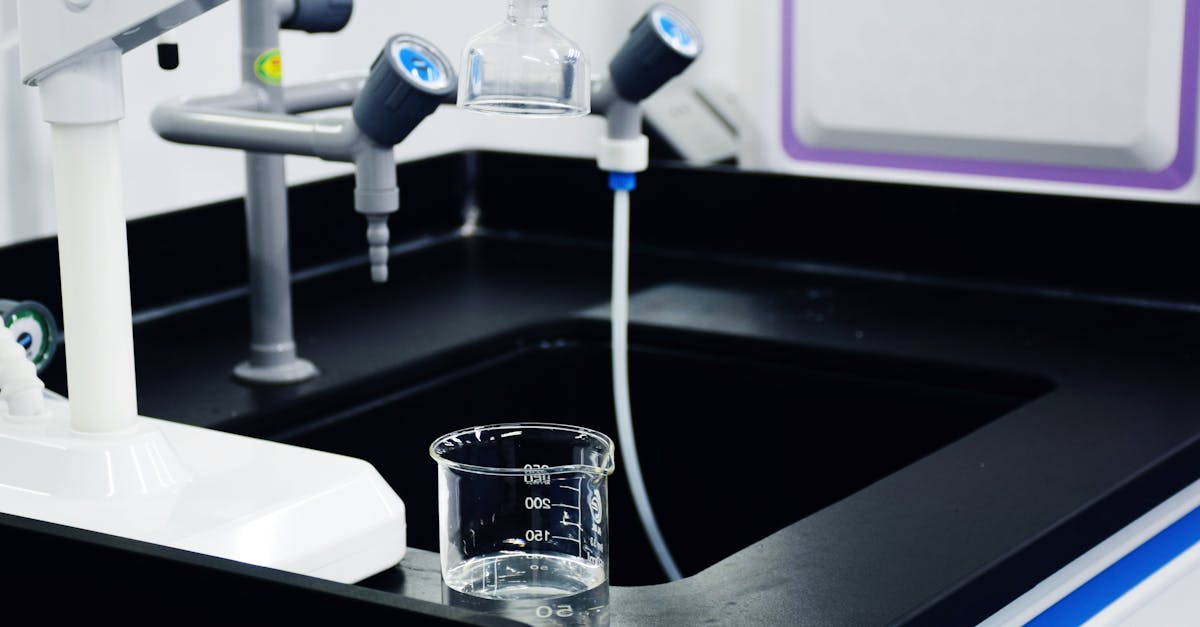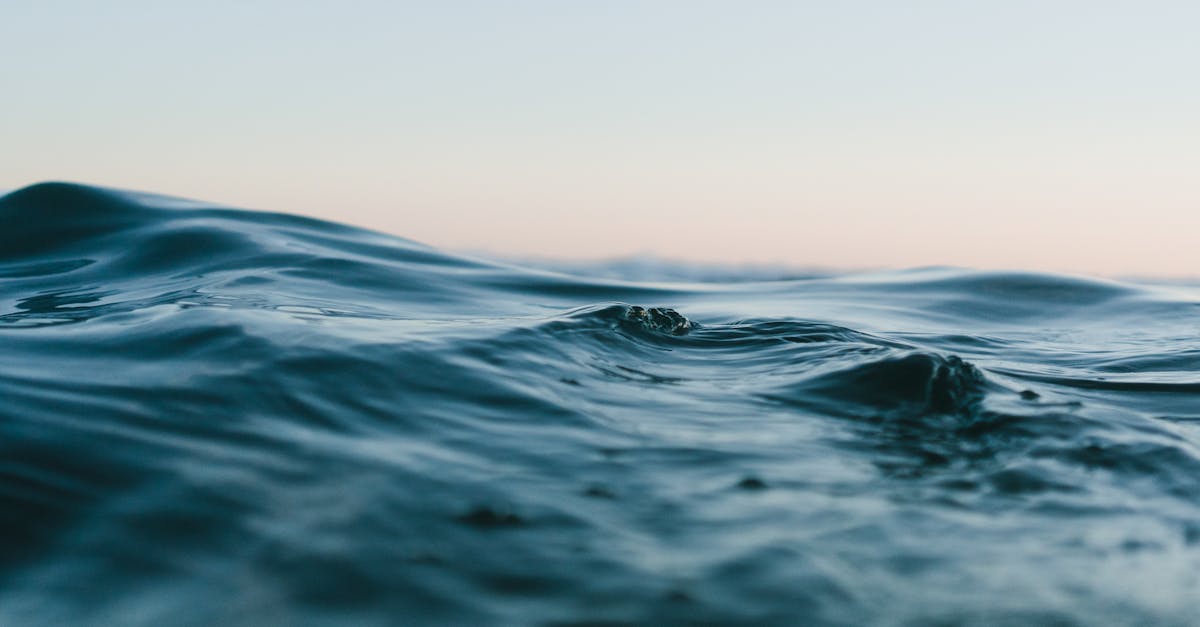Harnessing Nature’s Bounty: Eco-Friendly Solutions for Crystal Clear Water

Water is the lifeblood of our planet, essential for human survival and the prosperity of all living organisms. Access to clean and safe water is a fundamental human right, yet billions of people around the world lack this basic necessity. Through natural water filtration methods, eco-friendly water treatment options, and responsible water management practices, we can collectively strive towards a future where everyone has access to clean water for drinking, sanitation, and economic development.
This comprehensive guide explores various natural and eco-friendly approaches to ensuring the cleanliness and safety of our water resources. From harnessing the power of nature through sand and gravel filtration to exploring advanced electrochemical treatment technologies, we delve into the diverse range of methods available for water purification. We also highlight the crucial aspect of water conservation, emphasizing rainwater harvesting, graywater reuse, and water-efficient landscaping as key strategies for reducing water consumption and protecting our precious water resources.
Thank you for reading this post, don't forget to subscribe!
Beyond purification and conservation, monitoring water quality remains essential to safeguard public health and protect ecosystems. We discuss the importance of water testing, the establishment of water quality standards, and the role of citizen science in empowering communities to participate in water quality monitoring. Ultimately, achieving universal access to clean water requires a collaborative effort, involving governments, industries, communities, and individuals. By investing in water infrastructure, promoting water stewardship, and embracing sustainable practices, we can ensure a water-secure future for generations to come.
1. Harnessing Nature’s Power: Natural Water Filtration Methods
Nature offers a plethora of effective and eco-friendly methods for filtering water, removing impurities and ensuring its cleanliness and safety. Among these methods, sand and gravel filtration and slow sand filtration stand out for their simplicity, efficiency, and ability to remove a wide range of contaminants.
Sand and gravel filtration, a widely used method, utilizes the natural filtering properties of sand and gravel to trap and remove particles, turbidity, and microorganisms from water. Water is passed through layers of sand and gravel of varying sizes, with the larger particles being trapped by the larger gravel and the smaller particles being trapped by the finer sand. This simple yet effective method can significantly improve water quality, making it suitable for drinking, cooking, and other domestic purposes.
Slow sand filtration, another natural filtration method, relies on biological processes to gradually purify water over time. Water is passed through a bed of fine sand at a slow rate, allowing microorganisms and other contaminants to become trapped and filtered out. Over time, a biofilm develops on the sand bed, which further aids in the removal of impurities and pathogens. Slow sand filtration is a highly effective method for producing high-quality drinking water and has been used for centuries around the world.
Sand and Gravel Filtration: Simplicity and Efficiency
Sand and gravel filtration is a simple yet effective method for removing particles, turbidity, and microorganisms from water. It is a widely used method in both household and industrial water treatment systems due to its simplicity, affordability, and effectiveness.
The process of sand and gravel filtration involves passing water through layers of sand and gravel of varying sizes. The larger particles are trapped by the larger gravel, while the smaller particles are trapped by the finer sand. The thickness of the sand and gravel layers, as well as the size of the particles, can be adjusted to achieve the desired level of filtration.
Sand and gravel filtration is particularly effective in removing suspended solids, such as dirt, sediment, and algae. It can also remove some bacteria and viruses, although it is not as effective as other methods, such as activated carbon filtration or UV disinfection. However, sand and gravel filtration is a cost-effective and easy-to-maintain method that can significantly improve the quality of water for drinking, cooking, and other domestic purposes.
Slow Sand Filtration: Natural Purification Over Time
Slow sand filtration is a time-tested method of water purification that utilizes biological processes to gradually remove impurities and produce high-quality drinking water. It is a relatively simple and cost-effective method that has been used for centuries around the world.
Slow sand filters are typically constructed with a bed of fine sand, typically 1-2 meters deep, supported by layers of gravel and underlain by a drainage system. Water is applied to the top of the filter and allowed to slowly percolate down through the sand bed. During this process, impurities are trapped and removed through a combination of physical straining, biological processes, and chemical reactions.
A biofilm of microorganisms develops on the surface of the sand bed, which plays a crucial role in the purification process. These microorganisms consume and break down organic matter, including bacteria, viruses, and other contaminants. The biofilm also helps to remove suspended solids and turbidity from the water.
Slow sand filtration is a highly effective method for producing clean and safe drinking water. It is particularly well-suited for treating surface water that may contain high levels of organic matter and microorganisms. Slow sand filters are also relatively easy to maintain and operate, making them a good choice for small communities and developing countries.
Activated Carbon Filtration: Adsorbing Contaminants for Cleaner Water
Activated carbon filtration is a highly effective method for removing a wide range of contaminants from water, including heavy metals, pesticides, organic chemicals, and chlorine. Activated carbon is a form of carbon that has been treated to increase its surface area and thus its ability to adsorb impurities.
In water purification systems, activated carbon is typically used in granular form and packed into a filter bed. Water is passed through the filter bed, and the activated carbon adsorbs contaminants from the water. The adsorption process is driven by the physical and chemical properties of the activated carbon, as well as the properties of the contaminants.
Activated carbon filtration is particularly effective at removing organic contaminants, such as pesticides, herbicides, and industrial chemicals. It can also remove heavy metals, such as lead, mercury, and arsenic. Activated carbon filtration is often used in conjunction with other water treatment methods, such as sand filtration and UV disinfection, to provide comprehensive water purification.
2. Embracing Sustainability: Eco-Friendly Water Treatment Options

Eco-friendly water treatment options prioritize environmental conservation while maintaining water quality. These options utilize sustainable technologies and processes to minimize the environmental impact of water treatment and promote water conservation.
One eco-friendly water treatment option is UV disinfection. UV disinfection uses ultraviolet radiation to kill bacteria and other microorganisms in water. UV disinfection is a chemical-free method that does not produce harmful byproducts. It is a reliable and effective method for disinfecting water for drinking, cooking, and other purposes.
Ozonation is another eco-friendly water treatment option. Ozone is a powerful oxidizing agent that can be used to remove a wide range of contaminants from water, including bacteria, viruses, and organic chemicals. Ozonation is a chemical-free method that does not produce harmful byproducts. It is a highly effective method for purifying water for drinking, industrial, and municipal uses.
UV Disinfection: Harnessing Light to Eliminate Pathogens
UV disinfection is a chemical-free method of water purification that uses ultraviolet radiation to kill bacteria, viruses, and other microorganisms. UV disinfection is a reliable and effective method for producing safe and clean drinking water.
UV disinfection works by damaging the DNA of microorganisms, preventing them from reproducing and causing infection. UV disinfection is effective against a wide range of microorganisms, including bacteria, viruses, fungi, and protozoa. It is particularly effective against chlorine-resistant microorganisms, such as Cryptosporidium and Giardia.
UV disinfection is a relatively simple and cost-effective method of water purification. UV disinfection systems are available in a variety of sizes and configurations, making them suitable for a wide range of applications, from small-scale household units to large-scale municipal water treatment plants.
Ozonation: A Powerful Oxidizer for Water Purification
Ozonation is a powerful water purification method that utilizes ozone, a highly reactive form of oxygen, to eliminate bacteria, viruses, and other contaminants. Ozone is a strong oxidizing agent that can break down and destroy organic matter, including harmful microorganisms.
In water purification, ozone is typically generated by passing oxygen through an electrical discharge. The ozone is then injected into the water, where it reacts with and destroys contaminants. Ozonation is effective against a wide range of contaminants, including bacteria, viruses, fungi, protozoa, and organic chemicals.
Ozonation is a relatively simple and cost-effective water purification method. Ozone generators are available in a variety of sizes and configurations, making them suitable for a wide range of applications, from small-scale household units to large-scale municipal water treatment plants.
Electrochemical Treatment: Advanced Technology for Water Remediation
Electrochemical treatment is an advanced water purification technology that uses electricity to generate powerful oxidizing agents, such as hydroxyl radicals, which can effectively remove heavy metals, pesticides, and other persistent contaminants from water.
In electrochemical treatment, water is passed through a chamber containing electrodes. An electrical current is passed through the water, causing the electrodes to generate hydroxyl radicals. Hydroxyl radicals are highly reactive and can break down and destroy a wide range of organic and inorganic contaminants.
Electrochemical treatment is a versatile water purification technology that can be used to remove a variety of contaminants from water, including heavy metals, pesticides, solvents, and petroleum hydrocarbons. It is a relatively new technology, but it has shown great promise for the treatment of contaminated water.
3. Water Conservation: A Crucial Aspect of Water Management
Water conservation is a crucial aspect of responsible water management, as it helps to protect water resources and reduce the strain on water treatment and distribution systems. There are many ways to conserve water, both indoors and outdoors. Some simple water conservation techniques include:
-
Fixing leaks: A leaky faucet can waste hundreds of gallons of water per year. Fixing leaks is a simple and cost-effective way to conserve water.
-
Taking shorter showers: Showers account for a significant portion of household water use. Taking shorter showers can help to reduce water consumption.
-
Turning off the water while brushing your teeth or shaving: Leaving the water running while brushing your teeth or shaving can waste a lot of water. Turn off the water when you’re not using it to conserve water.
-
Watering your lawn less often: Lawns do not need to be watered every day. Watering your lawn less often can help to conserve water and save money on your water bill.
-
Using a rain barrel to collect rainwater: Rain barrels can be used to collect rainwater for watering plants or washing your car. This can help to reduce your reliance on treated water.
Rainwater Harvesting: Utilizing Nature’s Bounty
Rainwater harvesting is a sustainable practice that involves collecting and storing rainwater for various non-potable uses, such as watering plants, washing cars, and flushing toilets. Rainwater harvesting can help to reduce the strain on conventional water sources, such as rivers and aquifers, and can also save money on water bills.
There are many different ways to harvest rainwater, but the most common method is to install a rain barrel. Rain barrels are typically placed under downspouts to collect rainwater from roofs. The water can then be used for a variety of purposes around the home or garden.
Rainwater harvesting is a relatively simple and inexpensive way to conserve water. It is a great way to reduce your impact on the environment and save money on your water bill.
Graywater Reuse: Making Every Drop Count
Graywater reuse is the practice of using wastewater from showers, sinks, and washing machines for non-potable purposes, such as watering plants, washing cars, and flushing toilets. Graywater reuse can help to reduce household water consumption by up to 50%.
Graywater is typically collected in a storage tank and then treated before it is reused. Treatment methods can include filtration, disinfection, and nutrient removal. The type of treatment required will depend on the intended use of the graywater.
Graywater reuse is a safe and sustainable way to conserve water. It is a great way to reduce your impact on the environment and save money on your water bill.
Water-Efficient Landscaping: Designing for Sustainability
Water-efficient landscaping is a sustainable approach to landscaping that minimizes water use. It involves using drought-tolerant plants, efficient irrigation systems, and permeable surfaces to reduce water consumption.
Drought-tolerant plants are plants that are adapted to survive with less water. They have deep roots that can reach water deep in the ground, and they have thick leaves that store water. Some common drought-tolerant plants include succulents, cacti, and native plants.
Efficient irrigation systems deliver water to plants in a way that minimizes waste. Drip irrigation and soaker hoses are two examples of efficient irrigation systems. Drip irrigation delivers water directly to the roots of plants, while soaker hoses deliver water slowly and evenly over a long period of time.
Permeable surfaces allow water to soak into the ground instead of running off. This helps to reduce water waste and runoff pollution. Some examples of permeable surfaces include gravel, mulch, and permeable pavers.
4. Monitoring Water Quality: Ensuring Clean and Safe Water

Monitoring water quality is essential to ensure the safety and cleanliness of water sources, both for human consumption and environmental health. Water quality monitoring involves testing water for various physical, chemical, and biological parameters to assess its quality and identify potential contaminants.
There are many different methods for monitoring water quality, and the specific methods used will depend on the purpose of the monitoring. For example, water quality monitoring for drinking water will typically focus on testing for contaminants that could pose a health risk, such as bacteria, viruses, and chemicals. Water quality monitoring for environmental health may focus on testing for pollutants that could harm aquatic ecosystems, such as heavy metals, pesticides, and nutrients.
Water quality monitoring data can be used to make informed decisions about water management and protection. For example, water quality monitoring data can be used to identify sources of pollution, track the effectiveness of water treatment processes, and develop regulations to protect water resources.
Water Testing: Identifying Contaminants and Impurities
Water testing is the analysis of water samples to determine the presence of contaminants, impurities, and microorganisms. Water testing is important for ensuring the safety and quality of water for drinking, bathing, and other purposes. There are many different water testing methods available, each with its own advantages and disadvantages.
Some of the most common water testing methods include:
-
Physical testing: Physical testing measures the physical properties of water, such as temperature, turbidity, and color. Physical testing can be used to identify potential problems with water quality, such as contamination with sediment or chemicals.
-
Chemical testing: Chemical testing measures the chemical composition of water. Chemical testing can be used to identify the presence of specific contaminants, such as heavy metals, pesticides, and bacteria.
-
Biological testing: Biological testing measures the presence of microorganisms in water. Biological testing can be used to identify the presence of bacteria, viruses, and parasites.
Water Quality Standards: Setting Benchmarks for Safety
Water quality standards are regulations that set acceptable levels of contaminants in water. These standards are established by regulatory agencies to protect human health and the environment. Water quality standards are based on scientific studies that determine the safe levels of exposure to different contaminants.
Water quality standards are essential for ensuring that water sources are safe for drinking, bathing, and other purposes. They also help to protect aquatic ecosystems and the environment. Water quality standards are enforced by regulatory agencies, which monitor water quality and take action against polluters.
Water quality standards can vary from country to country. However, most countries have adopted similar standards to ensure the safety of water for human consumption.
Citizen Science: Empowering Communities in Water Monitoring
Citizen science initiatives empower communities to participate in water quality monitoring, fostering awareness and contributing to data collection. These initiatives provide training and resources to volunteers, who then collect water samples and test them for various parameters, such as pH, turbidity, and the presence of pollutants.
Citizen science data can be used to track water quality trends, identify pollution sources, and inform decision-making. It can also be used to raise awareness about water quality issues and engage the public in water stewardship.
Citizen science initiatives are a valuable tool for improving water quality and protecting our water resources. They provide an opportunity for communities to get involved in water monitoring and to make a difference in their local environment.
5. Conclusion: Striving for Clean Water for All
Clean water is essential for sustainable development and human well-being. It is a vital resource for drinking, cooking, sanitation, and many other purposes. Access to clean water can reduce the incidence of waterborne diseases, improve health outcomes, and boost economic development.
Protecting and conserving water resources is a collective responsibility. We all have a role to play in ensuring that present and future generations have access to clean water. We can do this by reducing our water consumption, recycling and reusing water, and protecting water sources from pollution.
Investing in water infrastructure and water management is also essential. This includes building and maintaining water treatment plants, water distribution systems, and sanitation facilities. Investing in water infrastructure can improve water quality, reduce waterborne diseases, and make water more accessible to communities in need.
Access to Clean Water: A Fundamental Human Right
Access to clean water is a fundamental human right, as recognized by the United Nations. This means that everyone, regardless of their location or socioeconomic status, has the right to access safe and affordable water for drinking, cooking, sanitation, and other essential purposes.
Access to clean water is essential for poverty reduction and improved health outcomes. When people have access to clean water, they are less likely to suffer from waterborne diseases, which can cause serious health problems and even death. Access to clean water also improves sanitation and hygiene, which can help to prevent the spread of disease and improve overall health.
Investing in water infrastructure and water management is essential to ensure that everyone has access to clean water. This includes building and maintaining water treatment plants, water distribution systems, and sanitation facilities. Investing in water infrastructure can improve water quality, reduce waterborne diseases, and make water more accessible to communities in need.
Water Stewardship: A Shared Responsibility
Water stewardship is the responsible use and management of water resources. It involves individuals, communities, and industries working together to protect and conserve water resources for sustainable use. Water stewardship is based on the principle that everyone has a role to play in ensuring that we have enough clean water for today and tomorrow.
There are many ways to practice water stewardship. Individuals can reduce their water consumption by taking shorter showers, fixing leaky faucets, and watering their lawns less often. Communities can invest in water conservation programs and infrastructure. Industries can reduce their water use by using more efficient technologies and processes.
Water stewardship is essential for ensuring that we have enough clean water for future generations. By working together, we can protect and conserve our water resources and ensure that everyone has access to clean water.
Investing in Water: A Wise Investment for the Future
Investing in water infrastructure is a wise investment for the future. It can stimulate economic growth, create jobs, and improve public health.
Access to clean water is essential for economic development. Businesses need water to operate, and workers need water to be healthy and productive. Investing in water infrastructure can help to attract businesses and create jobs. It can also improve the quality of life for residents and make communities more attractive to businesses and workers.
Investing in water infrastructure can also improve public health. Access to clean water can reduce the incidence of waterborne diseases, which can cause serious health problems and even death. Investing in water infrastructure can also improve sanitation and hygiene, which can help to prevent the spread of disease and improve overall health.
Overall, investing in water infrastructure is a wise investment for the future. It can stimulate economic growth, create jobs, and improve public health.
What are some simple ways to conserve water at home?
There are many simple ways to conserve water at home, such as taking shorter showers, fixing leaky faucets, and watering your lawn less often.
What are the benefits of investing in water infrastructure?
Investing in water infrastructure can stimulate economic growth, create jobs, and improve public health.
What is water stewardship and why is it important?
Water stewardship is the responsible use and management of water resources. It involves individuals, communities, and industries working together to protect and conserve water resources for sustainable use.




